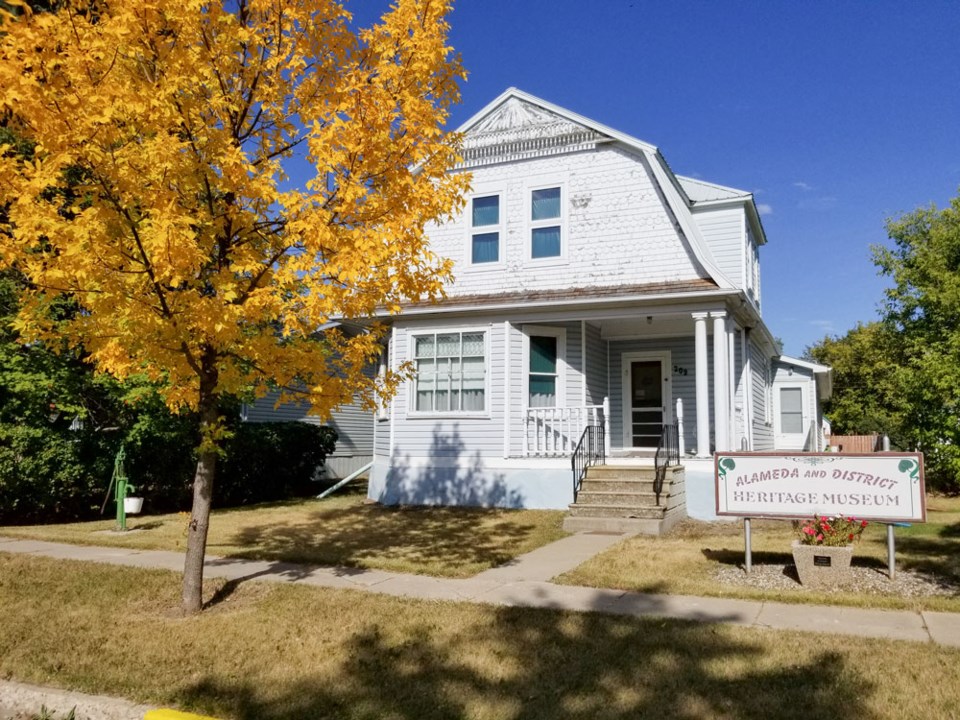Editor's Note: This is the latest article in our Co-op Cares series. It celebrates organizations that do great things in communities where the Southern Plains Co-op operates. Thanks to the Co-op for sponsoring this article and to the Alameda and District Heritage Museum for preserving the area's history.
Walk into the Alameda and District Heritage Museum, and you’ll get a good look at the history of the region.
The building that houses the museum was constructed in 1908, making it a perfect place to house so many historical items.
In 1987, the building was vacant, and its owner at the time, the local credit union, agreed to donate it to the town if the town agreed to forego the property taxes.
“At that time, a group got together and said they want to make it into a museum,” said Leonard Moncrief, who is the chairperson of the museum committee.
The museum, which opened in 1990, houses artifacts that reflect the Alameda area’s history.
“The objective is to ensure future generations will know how this area was settled, and the people who built this community,” said Moncrief.
Among the highlights of the building is an upstairs bedroom that contains instruments used by the original doctor in the area, Dr. H.H. Galloway.
Also, a group of people came together and constructed a replica of the buildings at the intersection of Main Street and Railway Avenue at the time of a fire in 1907. About 11 buildings were destroyed in the blaze. It’s a popular exhibit for visitors, Moncrief said.
An addition was built in 1995 to accommodate some bigger items that were donated. Moncrief noted there used to be an Anglican Church in the town, but it was demolished. The altar and the organ from that church were donated to the museum.
“There’s a section in the addition that has army uniforms and artifacts from the Boer War, and the First and Second World Wars,” said Moncrief.
Younger people who visit the museum have lots of questions, because they don’t know what some of the items are in the museum.
“There have been guided tours of school students in the past,” said Moncrief.
Most of their visitors are those with connections to the area and want to revisit the history.
“We had a man from New York come a couple of years ago,” said Moncrief. “I believe it was his great, great grandfather who lived in Alameda around 1900, and he went through.”
They also have all the old editions of the former Alameda newspaper, which allowed the man from New York to learn more about his ancestor.
The building has aged well, because it has been re-sided and there is tin on the roof. The exterior, other than the windows, are in good shape. The interior is close to the original.
The museum’s board has been working to replace the windows. They held a World Series pool and a Super Bowl pool that generated enough money to pay for two new windows.
The museum receives a grant from Sask. Lotteries. And a few years ago, they held a Christmas party fundraiser, in which they prepared a Christmas supper for a family and served it in their home. And they had a scavenger hunt in which people had to find various items around town. They’ve also been selling cookbooks as a fundraiser.
The Southern Plains Co-op has helped out the museum. The side of the building facing the street has cedar shingles, and paint was peeling. The museum approached the co-op to see if they could supply some paint.
Through a co-op program, Southern Plains donated primer and paint, and the project was completed last year, creating a much better looking facility.
The museum has traditionally been open for people to tour on Wednesdays in July and August, but that wasn’t the case last year due to COVID. Anyone who wants to tour the museum can call a member of the board to be let in.
While it is free to visit the museum, there is a silver collection for anybody who wants to donate.



